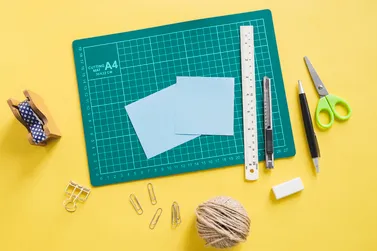
At times, geometry can look like a field full of hard-to-understand forms, theorems, and formulas. It doesn't have to be scary, though. There are simple things you can do to make studying geometry easier, whether you're a high school student having a hard time with Euclidean lands or a parent trying to remember long-forgotten ideas to help your child. This book will give you useful advice on how to solve those tricky math problems.
Understand the Basics Thoroughly
Know Your Definitions
Definitions are the building blocks of geometry. Point, line, plane, angle, circle, shape, etc. Make sure you understand these simple terms before you start solving problems. Definitions aren't just for school; they can also help you think through things in real life.
Master the Theorems
The most important thing in mathematics is the theorem. You can use strong tools to solve problems if you know theorems like Pythagoras' theorem, the properties of triangles, or the theorems about parallel lines. Instead of learning them by heart, try to understand how they work and what they can be used for. This will help you remember them and use them when you need to.
Use Technology Wisely
Geometric Software
There is a lot of software out there that can help you see and figure out math problems. Dynamic geometry settings, like GeoGebra, let you build and change figures and see right away what happens when you try different arrangements. This is a fun way to learn about geometric relationships and see how theories work.
Online Resources
The internet is not only a platform for learning but also an essential tool for practical assistance with assignments. If you find yourself struggling with a particularly tricky piece of homework, don't hesitate to seek out online geometry homework help. Numerous websites offer the expertise of skilled writers and a dedicated team ready to assist students in understanding complex geometric concepts and completing their assignments accurately. These resources can provide step-by-step solutions and personalized support, ensuring that you can master the topics without undue stress. Whether you're looking for a full explanation of geometric theorems or need help with a specific problem, the right online help can make all the difference.
Visualize the Problems
Visualizing the answer is one of the best ways to solve a math problem. Make plans. Even simple sketches can be very helpful. Diagrams break down hard problems into their smaller parts, which makes them easier to understand. Plus, they help you see connections and points of view that aren't clear from the problem's words alone.
Break It Down
Step-by-Step Approach
Don't make one big step to solve a hard problem. Split it up into steps that you can handle. Make a list of what you already know and what you need to learn. Use what you already know to make small steps toward what you don't know. This methodical technique can help you focus on one part of the problem at a time and keep you from getting too stressed out.
Use Algebra
A lot of the time, math is used in geometry. Many problems can be made a lot easier by using algebraic equations to show geometric features. For example, you could use math to find angles or figure out the length of sides. When you combine geometric facts with algebraic manipulation, you can get a very useful tool for fixing problems.
Practice Regularly
You need to practice geometry, just like you need to practice any other school subject. You will get better at solving different kinds of questions as you work on more tasks. You can also get faster by practicing often, which is especially helpful if you are getting ready for timed tests.
Seek Different Perspectives
Going the usual route to solve a problem might not always work. If you get stuck, try to stand back and look at the problem from a different point of view. To do this, you might need to make a new diagram, think about a different set of traits, or even talk to your teachers or peers about the problem.
Conclusion
It doesn't have to be stressful to work on hard geometry tasks. You can get good at solving geometry problems if you know the basics, can picture the problems, break them down into steps you can handle, practice often, and make good use of the tools you have access to. Remember that geometry isn't just about finding answers; it's also about seeing how shapes and places work in the real world. You can turn geometry from a task into a fun way to learn and explore if you know how to do it right. Don't give up, keep trying, and don't be afraid to ask for help when you need it. You've got this!